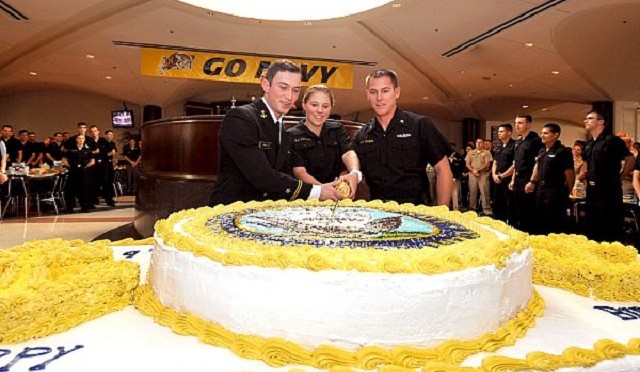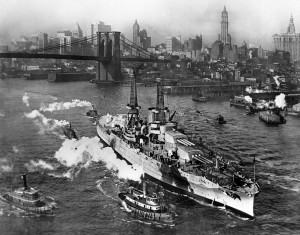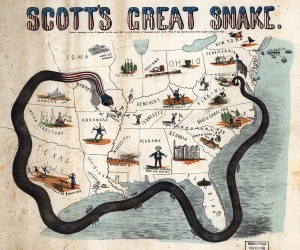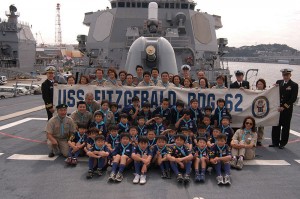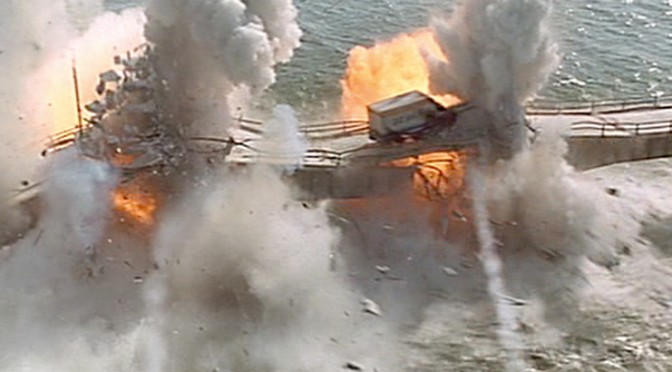By Erik Sand
In his book Saltwater Leadership, Rear Admiral Robert O. Wray admits that he is not trying to add to the body of leadership knowledge. He seeks to provide a condensed, tailored, leadership primer for junior sea service officers. He includes tidbits from 35 books and stories and advice from hundreds of seagoing leaders. Wray limits his explicit advice but implicitly portrays his vision of successful leadership through the excerpts and anecdotes he includes. While the leaders he envisions would succeed as junior officers, I am left wondering if they would have the skills needed to guide an organization in to the future.
Wray begins by asking, “What is leadership?” He determines that “leadership is the process of getting people to do things.”[1] This simple idea encapsulates the daily tasks of a junior officer. Whether on watch or working with a division, new junior officers must ensure the completion of tasks for which they lack the training to complete themselves. They can complete few of their responsibilities without the work of others.
Yet, Wray quickly muddies the water in answering his next question: “What is the difference between leadership and management?” He provides his own answer along with answers from various scholars and practitioners. In several cases, Wray’s definition of leadership sounds more like what these experts consider management. Wray writes, “Some say that leadership is deciding what to do, and why, while management focuses on how.”[2] The “how” of management seems more like the “process” of his leadership definition than what or why. Similarly, he quotes a leadership expert who states, “A leader knows what’s best to do; a manager knows how best to do it.”[3]
Wray’s original definition of leadership is not wrong. Indeed, it reflects exactly the qualities that earn promotion in today’s Navy. Rather, the contradiction between Wray’s original definition of leadership and his discussion of leadership and management demonstrates that eventually leaders must do more than get things done. Leaders must choose the right things to do.
Wray would likely agree. Leadership is prone to lists, he explains, because many traits and skills are required for success. The exclusion of certain traits from his core definition should not mean those traits are unimportant. The omission of “what and why,” however, continues through the book. Wray surveyed 380 naval leaders from senior enlisted to admirals asking what traits were most important for junior officer success. Integrity, character, and trustworthiness topped the list. Summarizing the overall result, he describes successful junior officers as “ honest, hardworking teammates.”[4] No one should downplay these virtues. They are essential for successful leadership, but they tend toward “how.” The respondents deemed traits needed to make determinations about “what and why” less important. Analytical thinking came in at 18 of 76, and inspiration, vision, scholarship, insight, inquisitiveness, and conviction fell in the bottom third.
The book may emphasize “how” over “what and why” because it targets junior officers. Junior officers spend more effort on the process of doing than on deciding what to do and why to do it. If, however, the skills needed for successful leadership change as a career progresses, the book does not mention it. At some points, it suggests the opposite. Wray writes that “leadership lessons and concepts can be universal.” [5] When he provides caveats, he compares the boardroom and the battlefield not the deckplates and the Captain’s chair. Moreover, several of the stories he includes, such an aircraft carrier captain facing an unconfirmed report of a man-overboard, describe situations a junior officer would almost never face. These stories teach valuable lessons about leadership and life at sea, but their inclusion reinforces the sense that the while the book is tailored for junior officers its view of leadership is not.
The Navy has used checklists and written procedures for decades. Today, however, units receive more direction from headquarters than ever before. Type commanders not only direct what training evolutions ships must complete and when, but they also provide detailed grading rubrics specifying exactly how those evolutions must be accomplished. Time dedicated to growing administrative requirements distracts officers from core competencies. Just as Saltwater Leadership seems to focus on the undoubtedly important “how” at the expense of the equally important “what and why,” so too does our Navy.
Admiral Wray has produced a useful compilation of leadership advice for junior officers learning how to lead and how to get things done, but unless those new leaders also learn to make decisions about what must done and why, our future Navy will find itself underway but adrift.
Erik Sand is an active duty U.S. Navy Surface Warfare Officer stationed at the Pentagon. His views do not reflect those of the Department of Defense or the U.S. Navy. He is indebted to the contributions of Midshipman Amanda Assenmarcher for providing a perspective from this book’s intended audience.
[1] Wray, Robert O., Saltwater Leadership: A Primer on Leadership for the Junior Sea-Service Officer (Annapolis, MD: Naval Institute Press, 2013), 5.
[2] Wray, Saltwater Leadership, 6.
[3] Wray, Saltwater Leadership, 6.
[4] Wray, Saltwater Leadership, 85.
[5] Wray, Saltwater Leadership, 11.

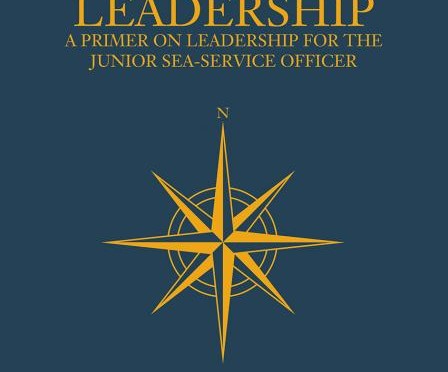

 Tiago Alexandre Fernandes Maurício, associate editor for our Forgotten Naval Strategists Week, joins us from Tokyo to discuss Fernando Oliveira and our other Forgotten Naval strategists – as well as how these strategists become “forgotten.” There’s a bit of Peloponnesian War thrown in too… just because.
Tiago Alexandre Fernandes Maurício, associate editor for our Forgotten Naval Strategists Week, joins us from Tokyo to discuss Fernando Oliveira and our other Forgotten Naval strategists – as well as how these strategists become “forgotten.” There’s a bit of Peloponnesian War thrown in too… just because.